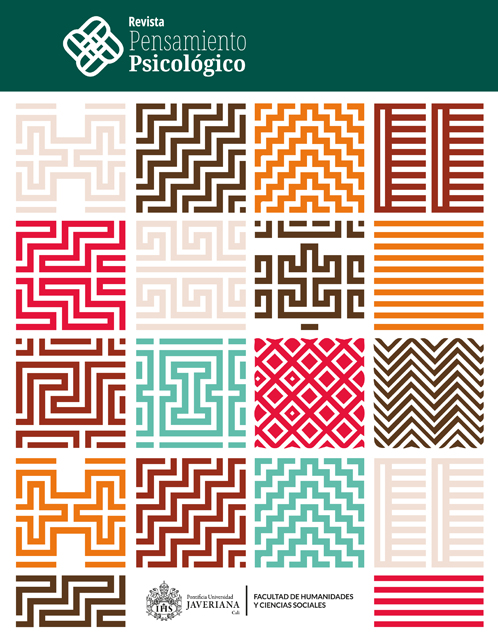Mediación tecnológica en el duelo: un análisis de los griefbots desde la psicología cultural
Main Article Content
Abstract
Objective. This article offers a reflection on the mediating role of the so-called thanatechnologies in grief from the perspective of cultural psychology. Specifically, we will focus on new digital technologies and, above all, on the so-called griefbots or deathbots. Method. For this purpose, in-depth interviews were conducted with three mourners to analyze how they imagine the way in which griefbots could mediate their experience of grief, as well as the memory of their deceased loved ones. Results. Interviews yielded an ambivalent attitude towards this new technology. While subjects communicated a desire to maintain the continuing bonds with their loved ones, there was also a certain rejection and unease at the prospect of interacting with a program based on the fingerprint of the deceased. Conclusion. The discussion of the results leads us to be cautious about assessing the potential effect of new technologies regardless of their context of use by each mourner.
Downloads
Article Details

This work is licensed under a Creative Commons Attribution 4.0 International License.
References
Bakhtin, M. M. (1981). The dialogic imagination. University of Texas Press.
Brescó, I., & Wagoner, B. (2019). Memory, Mourning, and Memorials. En K. Murakami, T. Kono, T. Zittoun, & J. Cresswell (Eds.), Ethos of Theorizing (pp. 222-233). Captus Press.
Brescó, I., Roncancio, M., Branco, A. y Mattos, E. (2019). Psicología cultural: un camino de ida y vuelta entre la mente y la cultura. Estudios de Psicología, 40(1), 1-9. https://doi.org/10.1080/02109395.2019.1565388
Brooker, C. (2013). Be Right Back [Episodio de serie de televisión]. En Black Mirror. Channel 4.
Brubaker, J. R., Hayes, G. R., & Dourish, P. (2013). Beyond the grave: Facebook as a site for the expansion of death and mourning. The Information Society: An International Journal, 29(3), 152-163. https://doi.org/10.1080/01972243.2013.777300
Despret, V. (2015). Au bonheur des morts. Récits de ceux qui restent. La Découverte.
Giorgi, A. (2012). The Descriptive Phenomenological Psychological Method. Journal of Phenomenological Psychology, 43(1), 3-12. https://doi.org/10.1163/156916212X632934
Jiménez-Alonso, B. (2023). Reflexiones desde la ética del cuidado y una epistemología feminista sobre las prácticas del acompañamiento al duelo, la pérdida y el final de vida. FUOC.
Jiménez-Alonso, B. y Brescó, I. (2022a). ¿Griefbots para despedirnos de nuestros seres queridos fallecidos? Algunas consideraciones psicológicas y éticas. Psicosomática y Psiquiatría, 20, 42-53. https://doi.org/10.34810/PsicosomPsiquiatrnum200404
Jiménez-Alonso, B., & Brescó, I. (2022b). Grief, Photography and Meaning Making: A Psychological Constructivist Approach. Culture & Psychology, 28(1), 107-132. https://doi.org/10.1177/1354067X211015416
Jiménez-Alonso, B., & Brescó, I. (2023). Griefbots: a new way of communicating with the dead? Integrative Psychological and Behavioral Science, 57, 466-481. https://doi.org/10.1007/s12124-022-09679-3
Josephs, I. E. (1998). Constructing one’s self in the city of the silent: Dialogue, symbols, and the role of ‘as-if’ in self-development. Human Development, 41(3), 180-195. https://doi.org/10.1159/000022578
Kasket, E. (2012). Continuing bonds in the age of social networking: Facebook as a modern-day medium. Bereavement Care, 31(2), 62-69. https://doi.org/10.1080/02682621.2012.710493
Klass, D., Silverman, P. R., & Nickman, S. L. (Eds.) (1996). Continuing Bonds: New Understandings of Grief. Taylor & Francis.
Langdridge, D. (2007). Phenomenological Psychology: Theory, research and method. Pearson Education.
Neimeyer, R., Klass, D., & Dennis, M. R. (2014). A Social Constructionist Account of Grief: Loss and the Narration of Meaning. Death Studies, 38, 485-498. https://doi.org/10.1080/07481187.2014.913454
Norlock, K. (2017). Real (and) imaginal relationships with the dead. The Journal of Value Inquiry, 51(2), 341-56. https://doi.org/10.1007/s10790-016-9573-6
Scanlan, C. L. (2020). Preparing for the Unanticipated: Challenges in Conducting Semi-Structured, In-Depth Interviews. Sage.
Sofka, C. (1997). Social Support “Internetworks,” Caskets for Sale, and More: Thanatology and the Information Superhighway. Death Studies, 21(6), 553-574. https://doi.org/10.1080/074811897201778
Vallès-Peris, N. y Domènech, M. (2020). Robots para los cuidados. La ética de la acción mesurada frente a la incertidumbre. Cuadernos de Bioética, 31(101), 87-100. https://doi.org/10.30444/CB.54
Valsiner, J. (2014). Functional reality of the quasi-real: Gegenstandstheorie and cultural psychology today. Culture & Psychology, 20(3), 285-307. https://doi.org/10.1177/1354067X14542532
Vygotsky, L. S. (1978). Mind in Action: The Development of Higher Psychological Processes. Harvard University Press.
Vygotsky, L. (2004). Imagination and creativity in childhood. Journal of Russian and East European Psychology, 42(1), 7-97. https://doi.org/10.1080/10610405.2004.11059210
Walter, T., Hourizi, R., Moncur, W., & Pitsillides, S. (2012). Does the Internet Change How We Die and Mourn? Overview and Analysis. Omega, 64(4), 275-302. https://doi.org/10.2190/OM.64.4.a
Wertsch, J. (1998). Mind as action. Oxford University Press.
Zittoun, T., & Gillespie, A. (2016). Imagination in human and cultural development. Routledge.

